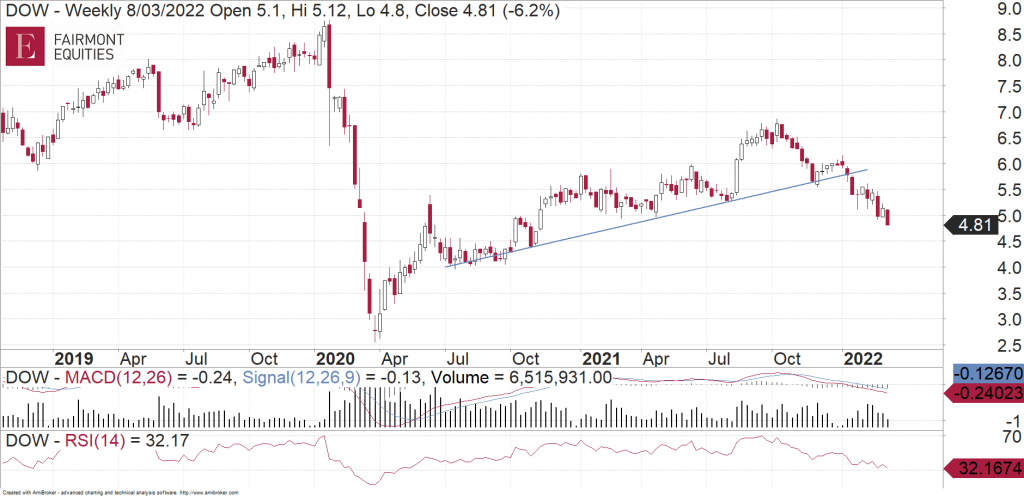Downer EDI’s (ASX:DOW) recent results for the six months to 31 December 2021 (1H22) appeared to be below market expectations. However, consensus estimates appeared to have underestimated the impact from COVID-19-related labour availability and productivity issues.
With the impact from these factors starting to dissipate, we recently researched the Company to assess whether a recovering earnings outlook, use of the balance sheet and improved cashflow can support a recovery in the shares.
About Downer EDI
Downer EDI is a services company focusing predominantly on the maintenance of infrastructure, such as roads, railways, telecoms and utilities. Following a recent restructure, the Company has largely divested its prior mining exposure and is transitioning its core focus to its “Urban Services” infrastructure businesses. This comprises three divisions (Transport, Utilities, Facilities). Following the restructure, the Company’s client base is significantly skewed towards government entities. Accordingly, the new business model is both less cyclical and capital intensive, while also relatively lower risk, providing Downer with more predictable revenues and cashflows.
The main contributor to the revenue and earnings base is the Transport division, which comprises the Road Services, Rail & Transit Systems and Projects businesses and comprises nearly half of group revenue and earnings.
Key Fundamental Drivers
Revenue Growth Support by Strong Macro Conditions
Despite the productivity challenges, the Company was able to generate 13% revenue growth in 1H22. This was underpinned by the Transport and Facilities divisions which have been supported by recent Australian government infrastructure investment.
Federal Government and NSW/Queensland state budgets are positive for DOW. The 10-year transport infrastructure investment pipeline expanded by $10b to $110b in the 2021 Federal Government budget. This includes additional infrastructure investment focused more on small to medium projects (such as regional/local roads, rail, education, water, utilities and telecommunications) which are DOW’s focus areas.
Over 90% of DOW’s Work In Hand is derived from Government or Government-regulated customers and has a mix of mainly schedule of rates, cost-reimbursable type contracts.
An Uncertain Earnings Outlook
DOW had previously targeted earnings growth from its core Urban Services businesses in FY22. However, at the 1H22 results release, the Company retracted this guidance, noting that Omicron impacts are proving difficult to predict and represent a risk to earnings in the current half.
The largest impact to earnings in 1H22 came from the Utilities division, which reported a 26% decline. Labour shortages and lowering work capacity from COVID-19-restrictions resulted in a high rate of deferred project work. There was also an impact from less project work in the higher-margin Water and Metering businesses.
This contributed to the underlying group EBITA margin declining from 3.6% in 1H21 to 3.0% in 1H22. A reported loss for the non-core Hospitality business also contributed to the ~60 basis points EBITA margin decline. Looking forward, EBITA margin is not expected to improve until FY23, as labour availability issues ease. Higher labour costs are typically managed via cost escalators in a range of long-term contracts.
Balance Sheet is Being Utilised Conservatively
Gearing (on a net debt to EBITDA basis) has decreased since 30 June 2021, to 1.5x as at 31 December 2021. The reduction in gearing reflects the strong operating cash flows and proceeds from the divestment of its Mining portfolio of businesses, which were only partially offset by the impact of the share buyback program.
The gearing level is now well below the Company’s target range of 2.0-2.5x and following a debt refinancing in 1H22, there is ample balance sheet capacity, with the net debt balance of $558m well below a total liquidity position of $2.1b.
With an uncertain earnings outlook, the Company appears to be favouring capital management over further acquisition in the short term. To this end, DOW has restarted its $400m on-market share buyback program, which is ~30% complete.
Becoming a More Attractive Dividend Play
The divestment proceeds, as well as strong levels of operating cashflow, supported an uplift in the interim dividend, whereby the dividend payout ratio is expected to be over 70% in FY22. An expected improvement in underlying cash conversion (which is on track to achieve the 90-100% target for FY22) is expected to support the higher dividend payout ratio.
Fundamental View
DOW is currently trading on a 1-year forward P/E multiple of ~13.5x, which is broadly in line with the 2-year average multiple of <14x. We contend that the market is starting to factor in:
i. The benefits to (and improved quality of) earnings, where EPS growth of ~9% is expected over the FY21-24 period on a CAGR basis and
ii. The enhanced free cashflow capability arising out of the restructured business to a more capital-light, less cyclical and capital intensive and relatively lower risk model.
However, in our view, the flat-to-slightly declining EPS growth profile in FY22, the lack of guidance for FY22, and history of earnings volatility are factors that limit potential upside in the shares.
Charting View
Over the past several weeks, we have seen a break of the trendline and a feeble bounce where DOW hasn’t been able to recover. At best we will see DOW build a base here, otherwise risk is to the downside which means investors can look for cheaper levels.

Michael Gable is managing director of Fairmont Equities.
Current share prices available here.
You can learn more about technical analysis in this article.
An 8-week FREE TRIAL to The Dynamic Investor can be found HERE.
Would you like us to call you when we have a great idea? Check out our services.
Disclaimer: The information in this article is general advice only. Read our full disclaimer HERE.
Like this article? Share it now on Facebook and Twitter!

